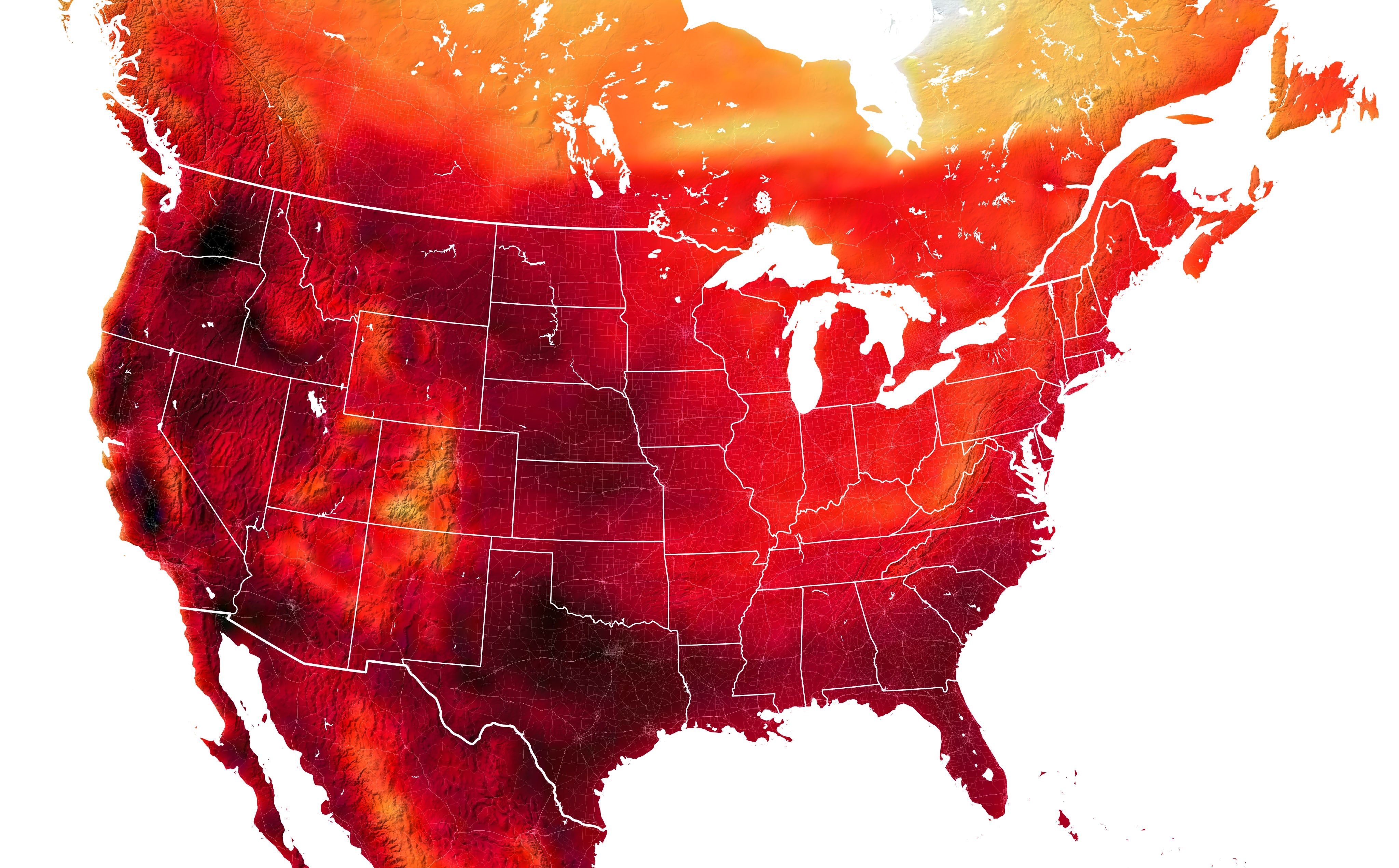Nasa heat map reveals July’s dangerously high temperatures across all of US
More than 150 million people, nearly half the country, faced heat warnings or advisories

Your support helps us to tell the story
From reproductive rights to climate change to Big Tech, The Independent is on the ground when the story is developing. Whether it's investigating the financials of Elon Musk's pro-Trump PAC or producing our latest documentary, 'The A Word', which shines a light on the American women fighting for reproductive rights, we know how important it is to parse out the facts from the messaging.
At such a critical moment in US history, we need reporters on the ground. Your donation allows us to keep sending journalists to speak to both sides of the story.
The Independent is trusted by Americans across the entire political spectrum. And unlike many other quality news outlets, we choose not to lock Americans out of our reporting and analysis with paywalls. We believe quality journalism should be available to everyone, paid for by those who can afford it.
Your support makes all the difference.A new map published by Nasa has revealed just how intense the heat was across the United States in July.
The animated map, created using satellite data and climate modelling, is awash in dark red as brutally-high temperatures gripped the country from Texas to California and New York to Florida.
The grim animation is a stark reminder of the rolling, dangerous heatwave that the US is facing this summer, a consequence of the worsening climate crisis.
In July, practically the entire US saw above-average temperatures, Nasa reported. In total, more than 150 million people — nearly half the country — faced warnings or advisories as high-pressure “heat domes” trapped hot air to create persistent heatwaves.
On the map, heatwaves in the southeast, northeast and northwest are clearly visible. But what really stands out is the constant dark red heat in the southern Plains states of Texas, Oklahoma and Kansas, all of which saw repeated days with temperatures at or above 100 degrees Fahrenheit (38 degrees Celsius).
Temperatures in the Plains reached up to 115F (46C), Nasa revealed. When combined with humidity, the temperature in some places felt like 120F (49C).
At one point, 100 million Americans were under heat advisories or warnings at once as high temperatures descended on the south and the northeast, the country’s most densely-populated region.
At least 43 places saw their hottest July on record, according to Axios, including many cities in Texas.
And the heat was often unrelenting. Nasa reported that Utah saw 16 days with temperatures at or above 100F (38C) and Newark, New Jersey marked five days in a row with temperatures in the triple digits — both records.
Near the end of July, a heatwave hit the Pacific Northwest, leading to as many as 20 deaths in Oregon and Washington. While not as disastrous or intense as last year’s heat dome in those states, which killed hundreds of people as temperatures broke 120F (49C), this year’s heatwave demonstrated again how vulnerable the normally temperate region is to heat extremes.
But the heat isn’t over yet. Millions of Americans are under heat advisories or warnings again this week as temperatures in the southern, central and northeastern US reach up toward or above 100F (38C).
Europe also experienced a record-breaking heatwave last month. Temperatures in the UK reached 40C (104F) for the first time on record and extreme heat killed nearly 2,000 people in Spain and Portugal.
Heatwaves are becoming hotter and more frequent due to the climate crisis, according to the UN’s Intergovernmental Panel on Climate Change, the world’s leading authority on climate science.
The world has warmed around 1.1C above pre-industrial temperatures. If the planet reaches 2C warming, heatwaves that used to occur once every 10 years would happen about every other year, the panel says.
July 2021 was the hottest month ever recorded on Earth, according to the US National Oceanic and Atmospheric Administration (NOAA). Data is not yet available for this July.



Join our commenting forum
Join thought-provoking conversations, follow other Independent readers and see their replies
0Comments